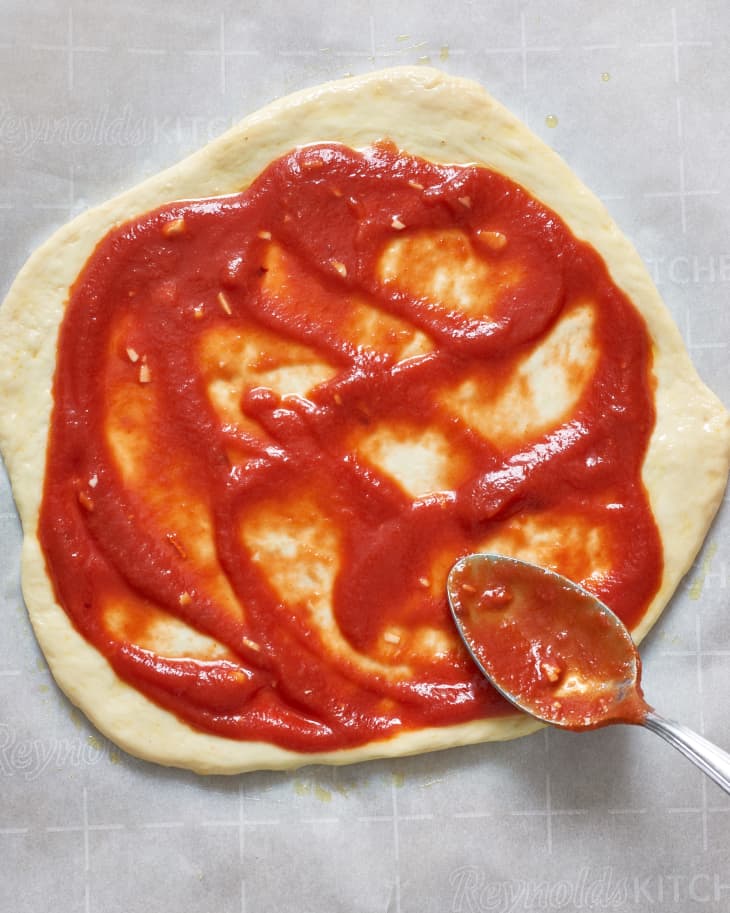The One Thing Pizza Pros Want You to Stop Doing
I love a slow-simmered pasta sauce for things like topping spaghetti, cooking juicy meatballs, and layering in lasagna, but I have a really big favor to ask: Can you please stop putting that red sauce on your pizza? If you’re buying jars of pizza sauce in the grocery store, you’re probably overpaying for sauce that belongs in your baked ziti, not on your pizza.
Pizza is incredibly quick-cooking — especially if you hack your home oven to get even hotter — so I understand why many folks assume that their pizza’s sauce should be pre-cooked. Professional pizza shops aren’t cooking their pizza sauce, though, because they know that buying quality canned tomatoes and adding very few ingredients to make a sauce is the secret to better-tasting pizza. Here’s how to steal this pizzeria secret for making pizza at home.
Quality Canned Tomatoes Are the Only Pizza “Sauce” You Need
My absolute favorite pizza sauce barely requires a recipe! Open a can of high-quality crushed tomatoes, add a few tablespoons of olive oil, grate two cloves of garlic, add about a teaspoon of salt, and stir to combine. You can use this sauce right away or stash it in the fridge for a few hours to mellow the sharp flavor of the garlic.
Calling for “high-quality tomatoes” used to mean hunting down real San Marzano tomatoes from Italy, but these days you can find quality canned tomatoes from both New Jersey- and California-based producers. Buying crushed tomatoes means little work on your part (no need to strain or purée), but if you buy whole peeled tomatoes in bulk (something Kitchn highly recommends) you can purée these in your blender and build the sauce there. Or you can use store-bought tomato purée for an even smoother sauce.
Beyond this uncooked, no-recipe recipe for pizza sauce being much cheaper than store-bought “pizza sauces,” I also love it because it means that the thin layer of sauce actually cooks in the oven. Using other cooked marinara-like sauces often results in pizza sauce that burns on the edges (or across the whole pie, on very thin-crust pizzas) and makes the resulting pizza taste bitter and overly acidic. Pizzas made with this no-cook version of pizza sauce taste tomato-forward, slightly sweet, and decidedly balanced — and let the pizza dough and cheeses be the real stars of each slice.
In case you do need a recipe: Super Quick 3-Ingredient Pizza Sauce
